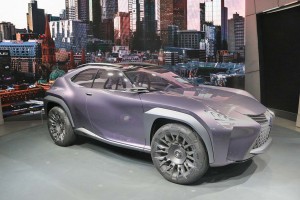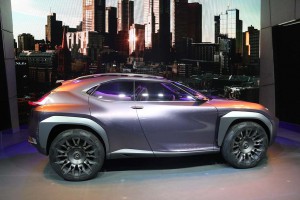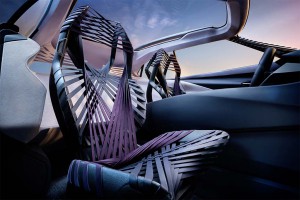Long known for its staid and unexciting designs, Lexus has been pushing the styling envelope during the last several years, and the new UX crossover-utility vehicle making its public debut at this year’s Paris Motor Show is no exception.
The ute, which is already triggering a fair bit of controversy, offers a more downsized option than what’s available in the current Lexus line-up, something that could play well in Europe, in particular. That’s reflected by the fact that the concept vehicle was designed at ED2, the brand’s design studio in the South of France.
“The biggest challenge for any designer is always to create something new and original, yet with relevance to both the customer and the brand. Overall, this is a product which gives another hint of the potential for Lexus’ design approach to satisfy those criteria,” said Simon Humphries, the president of ED2.
Ever since Toyota CEO Akio Toyoda declared the need to add more “passion” to the Lexus brand, its designers have been pushing the boundaries, sometimes a little too far, say the critics, with show cars like the original NX prototype. The new Lexus UX doesn’t appear to be backing off.
(Honda surprises in Paris with Type-R concept. Click Here for the story.)
The Paris show car boasts a coupe-like roof line and what appear to be “suicide doors” for back seat passengers that flow into bulging wheel arches. The sharply sloped tailgate features what appear to integrated, full-width LED taillights.
Like the original NX concept, the Lexus UX is crisscrossed by angular creases, one of the more distinctive lines tapering inward from the rear bumper to just below the back glass.
Meanwhile, there’s just a winglet-shaped appendage where the traditional sideview mirror should be. Japan recently authorized manufacturers to begin offering video display alternatives, and that appears to be on showcase on the NX. Regulators in Europe and the U.S. are considering similar moves.
Lexus describes the overall design of the UX concept as “inside-out” styling, a shorthand way of saying it delivers a relatively large cabin despite its compact, entry-lux footprint. Lexus designers explain they wanted to bring together seemingly contrasting goals, creating a crossover with a rugged, 4×4 presence, yet low ground clearance and a coupe-like driving position.
“We were looking for inspiration representing the synergy of contrasting values, in architecture, fashion design or nature, with a view to fusing lightness, structural, artistic and emotional values,” said Stephan Rasmussen, the UX exterior designer.
(Click Hereto see details about Lexus hinting about the UX debut.)
There’s a high-tech yet minimalist feel to the interior, most notably in the form of the Kinetic Seat Concept. It uses a spider web of netting that is flexible enough to mold itself to an occupant’s unique shape. The seats are more supportive, Lexus claims, and yet slimmer and lighter.
There are plenty of intriguing technical features, beyond the e-mirrors. There is a dual-zone approach to instrumentation. The upper display is a a transparent, hologram-like globe projected in a way that it appears to be floating in space, making it easier to focus on while also keeping eyes on the road. The second, lower display also has a hologram-like appearance and displays and controls climate and infotainment systems.
How much of the new technology carries over into production remains to be seen. It’s unlikely the e-mirrors will be added anytime soon, however, barring a sudden move by regulators in the U.S. and other markets.
(Paris Motor Show brings big launches, but key makers absent. For more, Click Here.)
As for whom Lexus is targeting, the maker says the UX will ultimately go after, “young customers upgrading in the quest for distinctive styling, a versatile interior, and an engaging driving experience, and premium customers looking for an impressive, high-function interior in a vehicle sized for urban living.”



